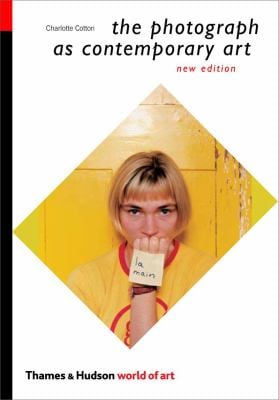Story Telling
Charlotte Cotton's, "the photograph as contemporary art", which I now own has been a recent topic of discussion.
The pages specific to this discussion are 64-70 in chapter 2, "once upon a time".
Another blog featuring this particular chapter: http://imagingworkshop11.blogspot.co.uk/2011/01/reading-charlotte-cotton-once-upon-time.html
Another blog featuring this particular chapter: http://imagingworkshop11.blogspot.co.uk/2011/01/reading-charlotte-cotton-once-upon-time.html
You can buy your copy from:
What narratives are investigated by Cotton in the work discussed? What varied ideas are these works linked to?
Collected fears and fantasies, psychological powerful devices, childhood references and stories usually dramatized and given sinister edges, storytelling gone wrong in most cases. Some had troubling narratives but were linked to fashion. For example animals, birds, rituals, bizarre and disturbing psychological dramas.
Artwork by Gregory Crewdson, "Twilight" 2002
Contemporary is a very open term and can be discussed in many ways however I see the word and work relating to it, new and exciting with challenging and sometimes controversial aspects to it. Work in this genre can be visually striking with powerful meanings and there will always be new work emerging to back up a new and interesting idea. Photographers under this term use their experiences and personal references to express themselves and through their work. Contemporary doesn't always suggest modern but is something that's new to the art world and is there to provoke discussion and analysis. Some people would argue that contemporary art/photography is too different and hard to understand, but if everyone produced the same photographs in the same way you would get bored looking at it.
untitled #2 (wonder), 1996. Chromogenic print, A.P. 2/2, edition of 5, 47 5/8 x 39 5/8 inches (120.8 x 100.6 cm). Solomon R. Guggenheim Museum, New York,Purchased with funds contributed by the Young Collectors Council 97.4577. © 1999 Anna Gaskell-
http://www.guggenheim.org/new-york/collections/collection-online/show-full/piece/?search=Anna%20Gaskell&page=1&f=People&cr=1 - Link to Anna Gaskell's collection.
These were all quite disturbing to look at, especially with the involvement of children, and the fact that their childhood memories of fairy tales and adventures were being totally transformed into sinister alternates of similar stories. I thought this could be the result of an unfortunate child who is rebelling at the idea of happy childhoods and would like to express their hurt and anger for not being able to experience what normal, happy children would experience. Or not even the child itself but a cry out for those who are victims of these experiences. I feel as if these images would not appear into someone's head without having some sort of recollection of the ideas around the subject, they are very powerful and effective however troubling and worrying views come to mind when viewing them.
http://www.guggenheim.org/new-york/collections/collection-online/show-full/bio/?artist_name=Anna%20Gaskell&page=1&f=Name&cr=1 -This link is to Anna Gaskell's biography.
Artwork by Gregory Crewdson, "Twilight" 2002
Untitled, 2001
Digital C-print
Image size: 48 x 60 inches (121.9 x 152.4 cm)
The use of sets and props compared with location and the environment, children as the subject and fashion models. Fashion and costume is frequently used with the references from stories which are extremely exaggerated. Landscape and Portrait photography and some combined together, also interior/architecture and perspectives and angles. The photographers reference film and fiction most in their work along with mild horror and Sci-fi. They use real people and children to create fake and unrealistic scenes and they exaggerate the things we most fear in the past and the future. For example the work above by Gregory Crewdson is very staged and fictional but there is an element of beauty within its' context. It's a very mysterious and intriguing body of work that again captures the essence of the paranormal and disturbing. Either way the images are very captivating and would have taken some time to produce.
For more information visit: http://www.gagosian.com/exhibitions/june-29-2002--gregory-crewdson
Work made by Charlie White, "Ken's Basement", 2000
Contemporary is a very open term and can be discussed in many ways however I see the word and work relating to it, new and exciting with challenging and sometimes controversial aspects to it. Work in this genre can be visually striking with powerful meanings and there will always be new work emerging to back up a new and interesting idea. Photographers under this term use their experiences and personal references to express themselves and through their work. Contemporary doesn't always suggest modern but is something that's new to the art world and is there to provoke discussion and analysis. Some people would argue that contemporary art/photography is too different and hard to understand, but if everyone produced the same photographs in the same way you would get bored looking at it.
CHRISTOPHER STEWART United States of America 2002
c-print
40 x 60 in / 122 x 152.4 cm
40 x 60 in / 122 x 152.4 cm
Does not liking a piece work make you disregard it completely? What happens if you pick a photograph/painting to pieces, would you discover a hidden meaning that you do prefer?





No comments:
Post a Comment